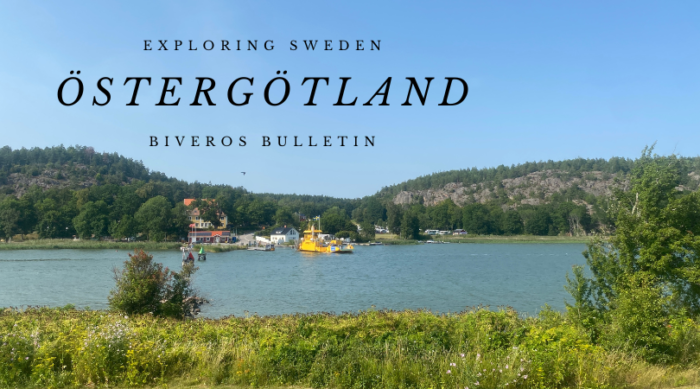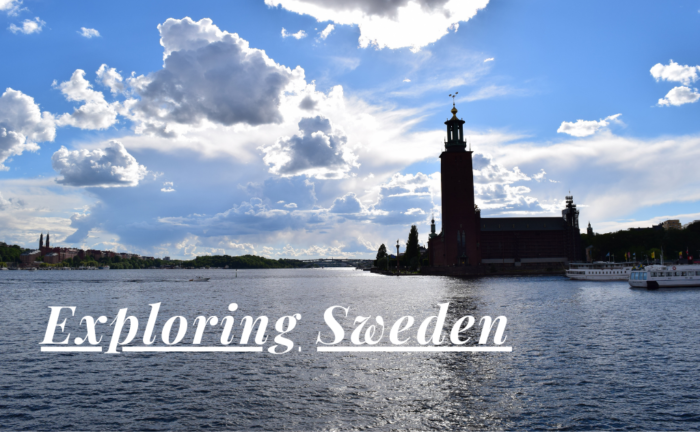There are few towns the size of Vadstena in Sweden that would be able to compete with its history. With around 5.600 inhabitants it is the center town of the Vadstena Municipality in Östergötland County.
Here you will both find the first monastery of the Bridgettine Order as well as one of the most well-preserved castles from the era of the Swedish king Gustav Vasa.
We visited this delightful small town by car in July 2016 and we very much enjoyed our stay there. We really recommend you to go there if you ever get the chance!





A Short History of Vadstena
First known mentioning of Vadstena dates back to the second half of the 13th century. The area around the town had been important already during the Viking Age and was considered a center of power. It would eventually be the testimony of the well-known Swedish King Magnus Eriksson and his queen Blanka that in 1346 gifted the area of Vadstena to Birgitta Birgersdotter’s planned abbey. Birgitta would later become a saint known as Heliga Birgitta, or Saint Bridget in English.
Vadstena Abbey
Vadstena Abbey was completed in 1384, eleven years after the death of Birgitta Birgersdotter. A town began to grow around the abbey and it received its town privileges in the year 1400. The importance of the town and the abbey grew during the 15th century and Vadstena became a cultural center in Scandinavia. The abbey would at the mid 15th century be in possession of around 1000 farmsteads.
The Reformation
Vadstena Abbey met its adversary in the first half of the 16th century. Gustav Vasa became Swedish king in 1521 and would soon thereafter introduce the Reformation in Sweden. The Reformation meant a fast decline in the importance of the abbey. Its struggles did, however, continue all the way to 1595 when its last parts closed down.
Vadstena Castle
Gustav Vasa affected the town in more ways than one. He did not only make the decision that would lead to the end of the abbey. he also began the construction of fortification in the town. The purpose of the construction would, however, change before completion. The final result was eventually Vadstena Castle, a renaissance castle that was first completed in the first half of the 17th century. Even before completion, it did house royals.
A Town in Decline
Not even a decision to build a castle in the town in 1544 helped to increase the size of the stagnating population. Vadstena lost its town privileges in 1643 in competition with nearby Askersund. The last royal to stay in the castle was Ulrika Eleonora in 1716. The castle was abandoned and would for centuries mainly be used for smaller workshops and storage.
The old buildings that were once the abbey saw a similar decline in importance. They were for some time used as a prison before being turned into a mental hospital in 1829.
New Development
Vadstena would eventually benefit from the construction of both the Göta Canal in 1832 and the railway in 1874. Once Lake Vättern and Vadstena had a connection to the sea, a harbor was built. The population was around 2500 in the 1910s and would only grow during the 20th century.



Things to Do and See
Vadstena is one of the most historical towns in Sweden and that has also gifted the town with its many attractions and sights. Locally you will find both the castle and the abbey, but there will be even more to Explore around Lake Vänern with towns such as Motala and Gränna. Excursions to the canal locks at Berg or to the city of Linköping are also good possibilities
Vadstena Slott
The castle in Vadstena is one of the more stunning ones in Sweden. Surrounded by a moat and with high walls, it is possible to imagine the massive defensive forces that protected the castle once upon a time. The castle was built by the Swedish king Gustav Vasa in 1545-1555 and it has been rebuilt several times.
Vadstena Slott was reconstructed as a renaissance castle in 1620 and today it is one of the best-preserved castles of its kind in Sweden. Visitors can visit both the inner yard of the castle as well as the castle itself.
Vadstena Kloster
The Vadstena Abbey is also known as Abbey of Our Lady and of St. Bridget. The abbey was founded in 1346 by one of the six patron saints of Europe, Heliga Birgitta. That is Saint Bridget or Saint Birgitta in English. She also goes by the name Bridget of Sweden. There were both male and female sections in the abbey. The abbey was the first monastery of the Bridgettine Order.
Walking around in the area of the abbey you will find several old buildings and the feeling of the history is imminent. The buildings are also massive – for a while, you might pretend that you are somewhere else than in Sweden.
If you really want to return back in time you can stay at the hotel that occupies the old buildings of the monastery.
Lake Vättern
There are few places in Sweden that don’t have access to a lake. Vadstena lies next to Sweden’s second-largest lake – Lake Vättern. This gives good possibilities for water activities such as swimming and fishing. One thing that I really like is to have a picnic on a beach next to the lake. It’s such a romantic and cozy thing to do!
Wadstena–Fogelsta Järnväg
This is today a museum railway, but once it was a railway that connected Vadstena with the rest of the country. You will find the old station building as well as some of the old wagons just a few meters from the castle.
The Town Center
A walk along the streets in the center of Vadstena is something you should not miss. The small streets that connect the abbey with the castle are filled with small shops and cafes. It is very picturesque and there are a lot of people out and about. Why not enjoy some delicious Swedish ice cream if you get the chance? During our visit, there were a lot of places to enjoy ice cream!
Vadstena Hospital Museum
Yes, we have mentioned it before: there are a lot of (sometimes odd) museums in Sweden. Health care has a long history in the area. There has been a hospital here since the 16th century and nowadays visitors can still their curiosity at the Vadstena Hospital Museum. The museum shows the history of mental care through the centuries. The museum is today housed in the “Great Madhouse”, a building dating back to 1757.
Vadstena Town Hall
The town hall was built in the 15th century and is the oldest still standing town hall in Sweden. Its appearance is similar to a small church. The building is today housing a restaurant.



How to Get to Vadstena
Do you want to travel to Vadstena? Here is how you can get there:
- Car: the town is only a short detour from the highway E4 in the vicinity of Mjölby.
- Bus: There are local buses connecting Vadstena with other places in the region.
- Train: Except for the small museum railway, there are no trains going to Vadstena. The closest train station is probably the one in Motala a bit to the north.
- Flights: The Closest airport is the one in Linköping, from where it is possible to continue with public transport.
The driving distance to Vadstena from 5 major Swedish cities, according to Google Maps:
- Stockholm – 247 kilometers (2 h 28 min)
- Gothenburg – 242 kilometers (2 h 30 min)
- Malmö – 384 kilometers (3 h 41 min)
- Luleå – 1075 kilometers (11 h 06 min)
- Linköping – 52 kilometers (43 min)
Explore More of Östergötland and Sweden


This post was first published 2016-09-08 and was updated 2021-09-05






